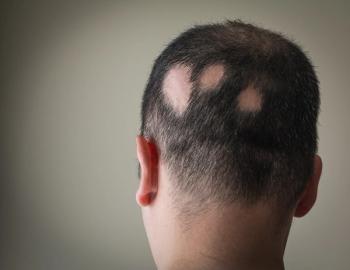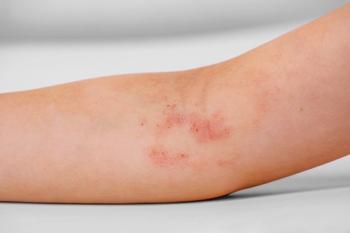
Skin eruptions on infants: self-resolving or concerning?
At the 2022 AAP National Conference & Exhibition, a presenter delves into diagnosis and management of common and uncommon skin rashes in newborns.
Pediatric health care providers are accustomed to seeing a variety of dermatological disorders in babies, often presenting as acne vulgaris, atopic dermatitis, and other skin conditions. Raegan Hunt, MD, PhD, FAAP, FAAD, division chief, pediatric dermatology vice chair of dermatology at Texas Children’s Hospital Baylor College of Medicine in Houston Texas, offered a comprehensive and educational session covering dermatological skin eruptions in newborns, with conditions ranging from common and self-resolving to rare and sometimes deadly. Her session, which included such nuances as “acne imposters” offered pearls, especially for the general pediatric practitioner who may not be as familiar with some of the more unusual infant skin conditions.
Her session started with this case: A healthy, 2-day old infant presented with irregular erythematous patches with yellow pustules on stomach area. The diagnosis? Erythema toxicum neonatorum, a benign, self-limited eruption. This skin disorder is in fact, a relatively common eruption in newborns, affecting 40% to 70% of babies, though not present at birth. The treatment is self-resolving.
Similarly, a full-term infant presented with pustules and hyperpigmented macules at birth, with a diagnosis of transient pustular melanosis, another normal and harmless skin condition affecting infants, which appear as hyperpigmented macules and is also self-resolving.
Other dermatological presentations in newborns are not quite that simple, however. “Congenital candidiasis,” noted Hunt, “acquired in utero or during delivery, presents as erythematous monomorphic papulovesicular eruptions within the first 12 hours of life. The papules progress to pustules then crust, and palms, soles, nails may be involved.” This rare disorder can range from diffuse skin eruption without any systemic symptoms to respiratory distress, hepatosplenomegaly, sepsis, and death, a particularly high risk for extremely low birth weight infants. Blood and urine cultures should be done, with the treatment being oral fluconazole, topical antifungal cream, and, if unstable, intravenous amphotericin B.
Hunt next discussed bullous impetigo, a localized infection that causes fluid-filled blisters on the trunk, arms, and legs of infants. This rare disorder is often a minor infection that is treated with anti-staphylococcal antibiotic.
Neonatal acne, a benign, transient, non-scarring condition presents in the first 3 weeks of life with erythematous papules and pustules on forehead, cheeks and scalp, sometimes caused by transient maternal hormones. For this disorder, watchful waiting is recommended and, if needed, topical azole cream is usually prescribed. Hunt warned audience members, though to be on the lookout for the “newborn acne imposter,” milia. Milia, a superficial occlusion of follicles, appear as tiny white bumps or clear blisters, is harmless, and goes away by itself. Another newborn acne imposter mentioned in this session was sebaceous hyperplasia, white or yellow papules on the nose of newborns where the sebaceous glands are enlarged. This too, is self-resolving.
Hunt’s presentation continued with a look at various other neonatal and infantile acne conditions, symptoms and treatments, as well as neonatal herpes, cutis marmorata, infantile seborrheic dermatitis, scabies, and other skin conditions.
Some best practice takeaways for pediatricians:
--Look for comedones in neonatal acne, a sign of true infantile acne, which can be scarring and needs treatment
--Consider Langerhans cell histiocytosis if infantile seborrheic dermatitis is not responding to treatment
--Recognize that nodules or acral pustules in babies are a frequent sign of scabies in infants. “If scabies is suspected or diagnosed,” said Hunt, “treat the entire household!”
Reference
Hunt R. Diagnosis and management of common skin rashes in the newborn. 2022 AAP National Conference & Exhibition. October 11, 2022. Anaheim, California.
Newsletter
Access practical, evidence-based guidance to support better care for our youngest patients. Join our email list for the latest clinical updates.














